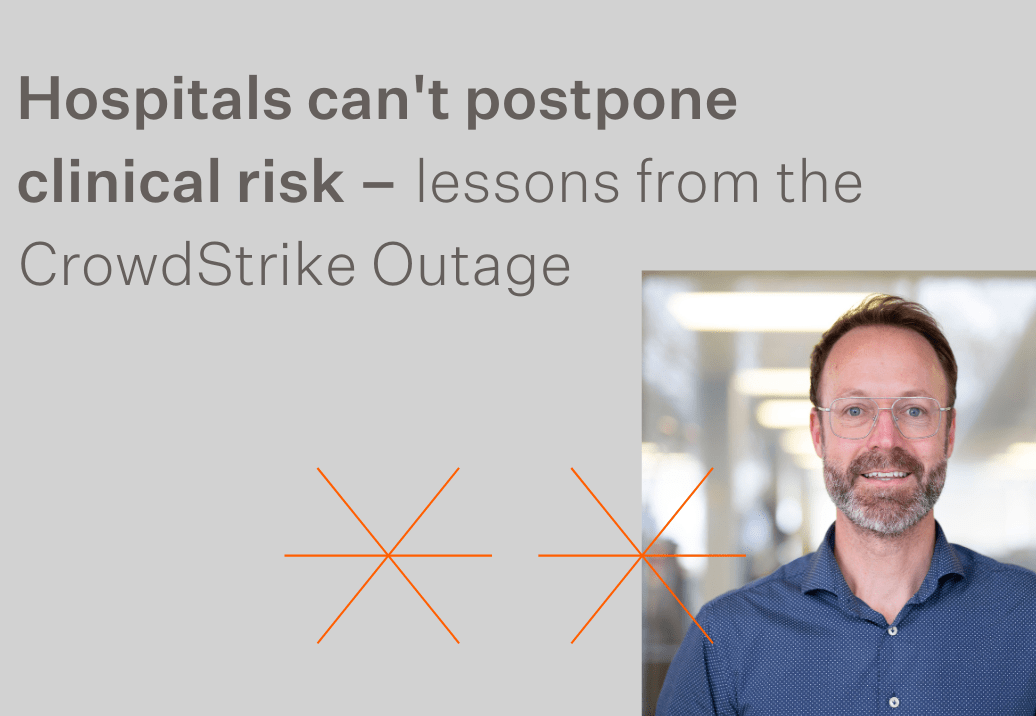September 17th is World Patient Safety Day, a time to reflect on one of healthcare’s most critical responsibilities.
This year’s theme highlights the importance of accurate diagnoses as the cornerstone of effective treatment. With advancing technology, we have more tools than ever to reduce errors and improve outcomes.
We invited some Orion Health team members to share their insights on these challenges. While we’ve made great strides, they all agree there’s still work to be done.
The Challenge of Diagnostic Accuracy
Diagnosis is the critical first step in a patient’s journey in healthcare. Get it wrong, and the consequences can be dire. As Ken Leonczyk, SVP of Strategy, explains, ensuring safety during transitions of care is essential to reducing errors:
“Transitions in care, particularly across different settings, are a key area where safety is at risk. Using technology, data, and collaborative processes enabled by technology vastly improves coordination across the care continuum.”
This is crucial—when patients move from one provider to another, there’s a heightened risk of miscommunication or lost information. However, using integrated technology, like real-time care coordination tools healthcare teams can ensure nothing slips through the cracks.
Collaboration: The Key to Better Outcomes
Collaboration is a cornerstone of patient safety. Dr. Chris Hobson, Chief Medical Officer, emphasises how interoperability and integrated care systems make a big difference in ensuring safe and consistent care:
“The key benefit of integrated care systems is that every provider, from clinicians to paramedics, has immediate access to complete patient information. This provides the essential context needed for rapid and accurate decision-making.”
Interoperable technology, such as Health Information Exchange (HIE), further strengthens these processes by improving the flow of information and ensuring that up-to-date information is always accessible: “HIE significantly improves the safety profile in healthcare by reducing diagnostic discordance, improving medication reconciliation, and allowing clinicians to access complete information in real-time.”
How Technology is Transforming Diagnosis
We’re in an exciting era where technology can save lives. It’s enhancing both the accuracy and timeliness of diagnoses. VP of Data Fiona McPherson Grant points out how integrating data from multiple sources can provide a more complete picture of a patient’s health:
“The sophistication of modern data platforms allows for seamless integration of diverse data sources, from electronic medical records to wearable devices. This holistic, real-time view enables clinicians to make more informed, personalised diagnoses, particularly in managing chronic conditions where timely interventions are crucial.”
Artificial intelligence (AI) is another critical tool in improving diagnostic accuracy. Fiona adds:
“AI’s ability to identify patterns in large datasets that humans might overlook is transforming how we approach complex cases, such as cancer and neurological disorders. By catching subtle anomalies early, AI is helping us move toward a more proactive model of care.”
Dr Chris Hobson shares a similar enthusiasm for AI, especially in areas like imaging, but also raises a similar note of caution:
“AI enhances radiologists’ ability to diagnose using imaging technologies, such as mammography or retinal scans. But we need to be careful—AI’s black-box nature, where we can’t always see how it arrived at a conclusion, means it should be used to complement human expertise, not replace it.”
Nurses: The Guardians of Patient Safety
In the 1800s, Florence Nightingale pioneered patient safety by transforming healthcare data to improve outcomes. Her meticulous data collection and analysis laid the foundation for modern patient safety practices.
Clinical Director Carey Campbell explains how that legacy continues today: “Florence Nightingale transformed nursing from a practice based on intuition to one grounded in empirical evidence. Today, nurses rely on digital tools like electronic health records (EHRs), automated medication dispensing systems, and real-time monitoring technologies to reduce human error, streamline communication, and enhance the accuracy of patient information.”
These tools don’t just protect patients—they also help nurses work more efficiently. Carey notes: “Digital solutions improve patient safety, but they also enhance operational efficiency, streamline workflows and reduce the time spent on administrative tasks. This efficiency is one aspect that helps prevent burnout and supports a more sustainable and supportive work environment for one of our most important and often underrated patient safety resources – nurses.”
By empowering nurses with accurate, real-time data, we can ensure they can continue providing safe, effective care.
Engaging Patients for Better Safety
Patient safety isn’t only about what happens inside the clinic. Engaging patients in their care is a vital part of the solution. Dr Chris Hobson highlights the role of patient engagement in reducing harm: “Investment in reducing patient harm can lead to significant savings and better outcomes. When done well, patient engagement can reduce harm by up to 15%.” (Slawomirski L, Auraaen A, Klazinga N.)
Digital tools, like Digital Front Doors and patient portals, give individuals access to their health information and enable them to actively participate in their care. As Chris puts it: “A digital front door can facilitate patient engagement at every step of their clinical journey, ensuring they are informed and involved in the decisions that impact their health.”
When patients are empowered with information, they become partners in their safety, helping to reduce errors and improve outcomes.
Securing Patient Data for Safe Diagnosis
“As technology continues to drive improvements in patient outcomes, from streamlining hospital workflows to enabling personalised medicine, it’s critical that cybersecurity remains a top priority.”
Chief Information Security Officer Grant Anthony emphasises that “as healthcare becomes more connected, it becomes more vulnerable to cyber threats. Cybersecurity is critical to ensuring that health technology functions as intended—without disruption or interference. Proper security protocols ensure clinicians can focus on delivering care without worrying about data breaches or system failures that could lead to compromised patient safety.”
Without the proper security measures, the technology designed to improve patient safety could become a liability. Healthcare organisations can protect both their patients and the continuity of the innovative technology shaping the future of medicine by implementing robust security protocols to safeguard their data.
Moving Forward for Safer Healthcare
The future of improving diagnosis for patient safety hinges on a unified approach that combines advanced technology, seamless collaboration, and empowered patients. Real-time data sharing and AI-driven insights will enable more accurate, personalised care while robust cybersecurity protects sensitive patient information. Digital tools will reduce errors and streamline workflows for clinicians, and engaged patients will play a vital role in their safety. Together, these elements will ensure safer, more effective diagnoses, leading to better outcomes for all.
It’s not just about technology—people and processes must also align for optimal results. As Ken Leonczyk notes:
“Technology-enabled care coordination across different care settings leads to vastly improved outcomes. It’s exciting to see how much further we can go as we innovate for 2025 and beyond.”



